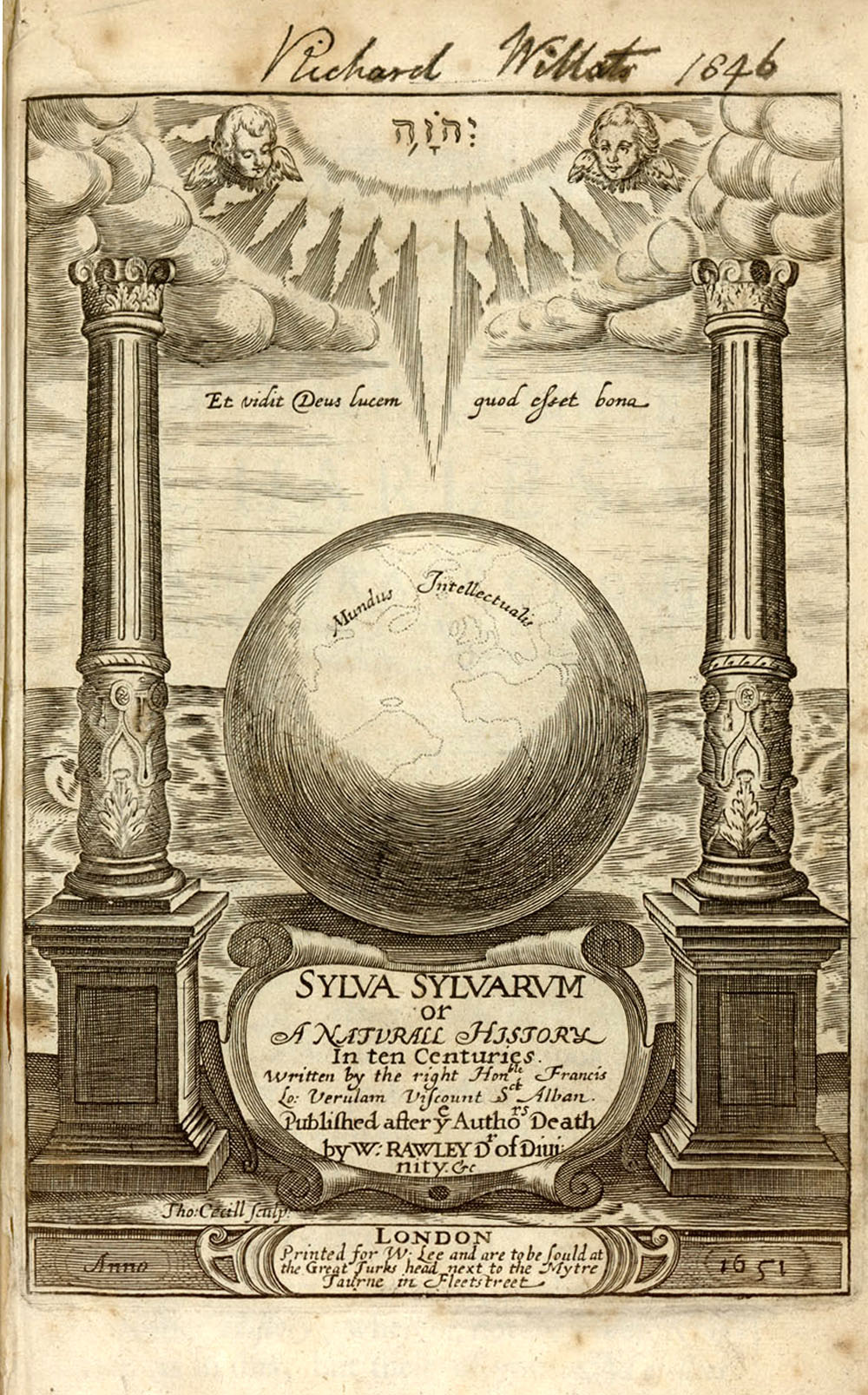
Nature’s Secrets
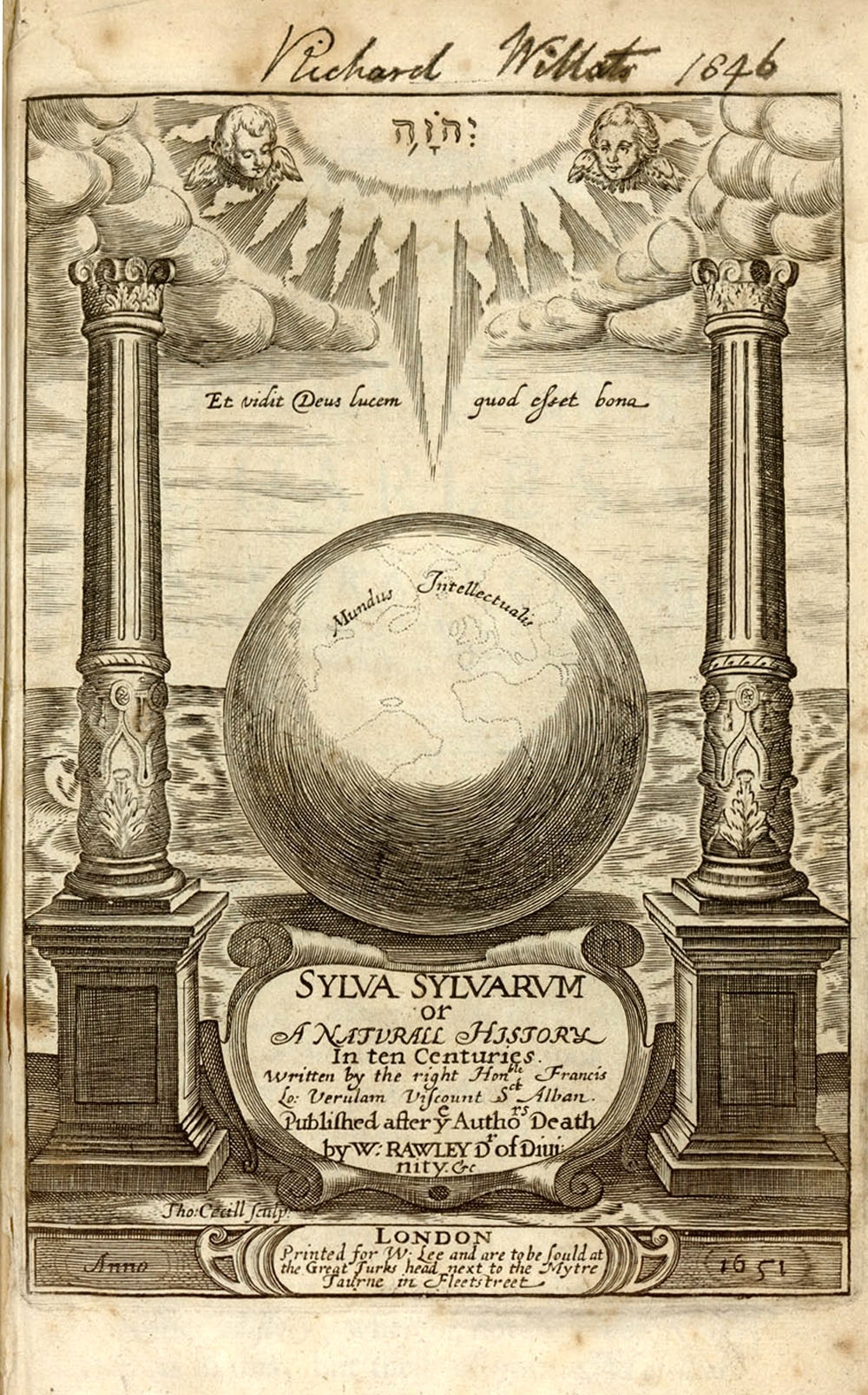
Rhoades AES8463
Bacon’s posthumously published Sylva Sylvarum is a collection of facts and experiments relating to natural history. It takes a different approach than we might expect, for from its beginning, Bacon announces his interest in occult knowledge. The work’s frontispiece, shown here along with an engraving of the author, differs sharply from the frontispiece of one of Bacon’s earlier works, Advancement of Learning. There, a ship was depicted sailing confidently into the ocean of knowledge. The frontispiece to Sylva Sylvarum, by contrast, reveals Bacon’s belief that a true understanding of the world relies not on physical exploration alone, but on “divine revelation†of knowledge.
Bacon explores this idea in the final chapter of Sylva Sylvarum. There, he grapples with an intellectual heritage cultivated by the ancient Greeks, preserved by medieval writers like St. Thomas Aquinas, and revived by Renaissance humanists fascinated by alchemy and magic. Like Pythagoras, Bacon held that the world and all its contents are united by a shared spirit—the spiritus mundi. The world, in his view, was a single living organism. Changes in one individual part (animate or inanimate) might influence others elsewhere. Following this line of reasoning, by turning lead into gold, alchemists sought to transform a corresponding part of their own soul into something purer. Bacon goes further and considers the idea that the “force of imagination†in one individual could be used to magically influence the actions of others.
Partly because of ideas such as these, some have theorized that Bacon was a member, and perhaps even the founder, of a secret society of mystics called the Order of the Rose Cross. For more on this organization, see Signs and Symbols.
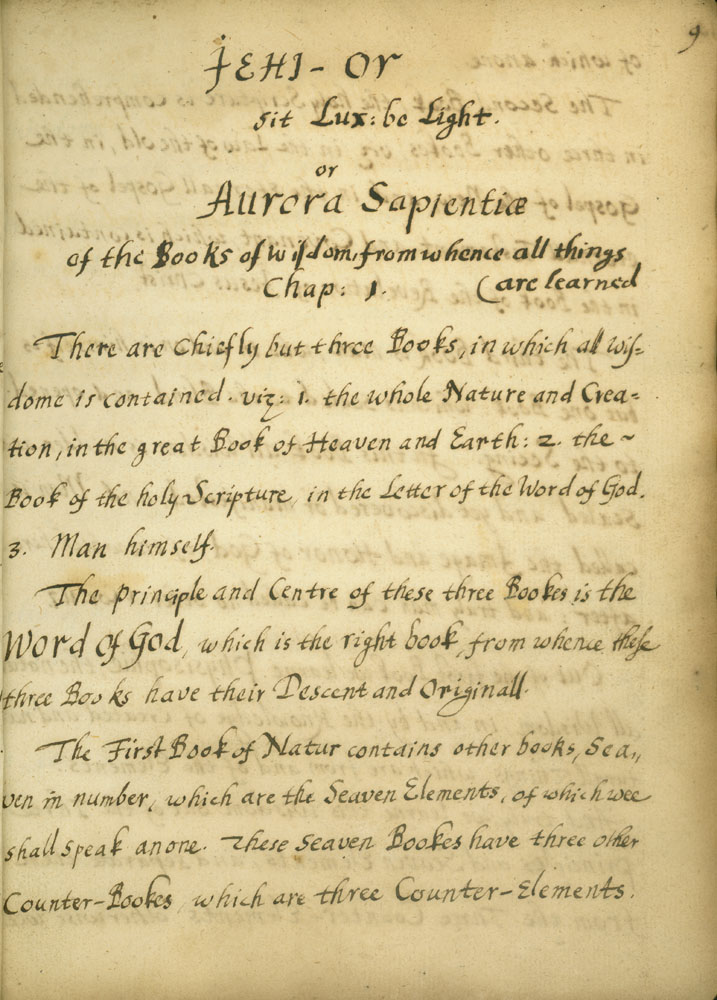
George De Forest Collection, 31: 26, vol. 46.
Knowledge, according to the manuscript displayed here, is threefold. It is “of the Naturall, in and of all things created; then of the Wisdome of Faith unto Salvation; and next of the mysterious hidden Wisdom, the which for the generall is not known.†“[T]he Word speaketh… out [of], in, and through all things,†the author suggests, “because it is in all things.†Thus, the study of the natural world was essentially the study of God. “[T]he signature of everything by the outward… telles plainly, what inwardly be hidden….†The text draws a parallel between baptism and the alchemist’s quest to transmute “inferior metall into pure gold.†However, it also warns seekers after occult wisdom to be careful, lest they enter into the realm of sorcery and witchcraft.
The text’s author, Paul Felgenhauer (1593-ca. 1677), was a student of the great German mystic and theologian Jakob Böhme (1575-1624). Felgenhauer was persecuted by both Catholics and Protestants in his native Bohemia on account of his unorthodox religious views, which combined his interests in alchemy and prophecy. After wandering through Germany for many years, he finally sought refuge in Amsterdam and began publishing his works. Felgenhauer’s writings, along with those of Böhme, with whom he was often confused, attracted considerable attention in England, where their followers were known as Behmenists. The poet John Milton was well versed in their ideals. Behmenist philosophy also influenced two groups later associated with America—the Quakers and Shakers.
The manuscript displayed here is a scribal copy of an English translation of Das Büchlein Jehi Or, printed in Holland in 1640. At least one other manuscript copy of Jehi-Or is known (British Museum, Sloane Ms. 728.), and others probably circulated in the seventeenth century. The text was revised and reprinted in 1673 in William Cooper’s The Philosophical Epitaph of W. C., Esquire, an anthology of metaphysical writings that contains the first bibliography of English-language works on chemistry.
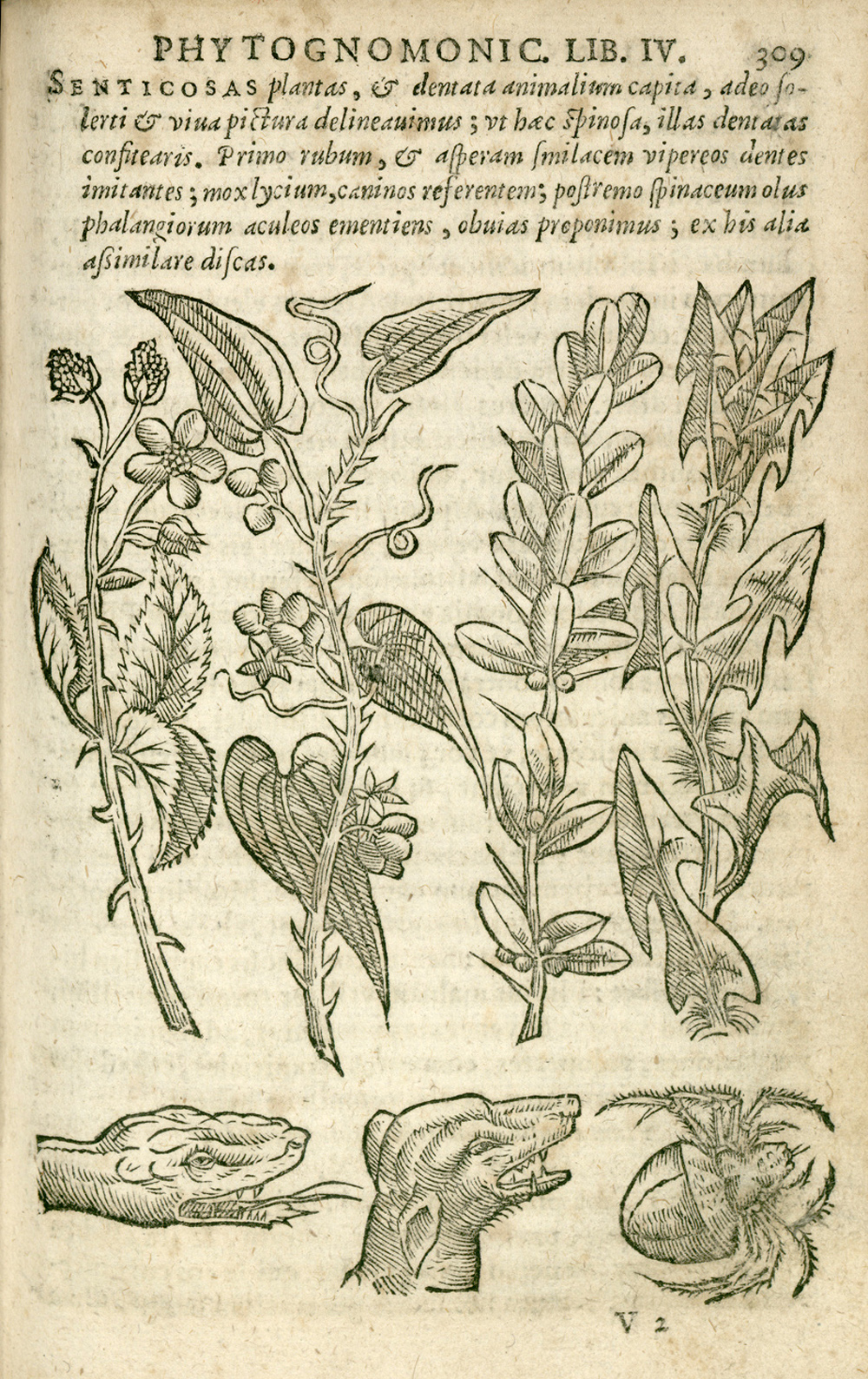
Rhoades AES9615
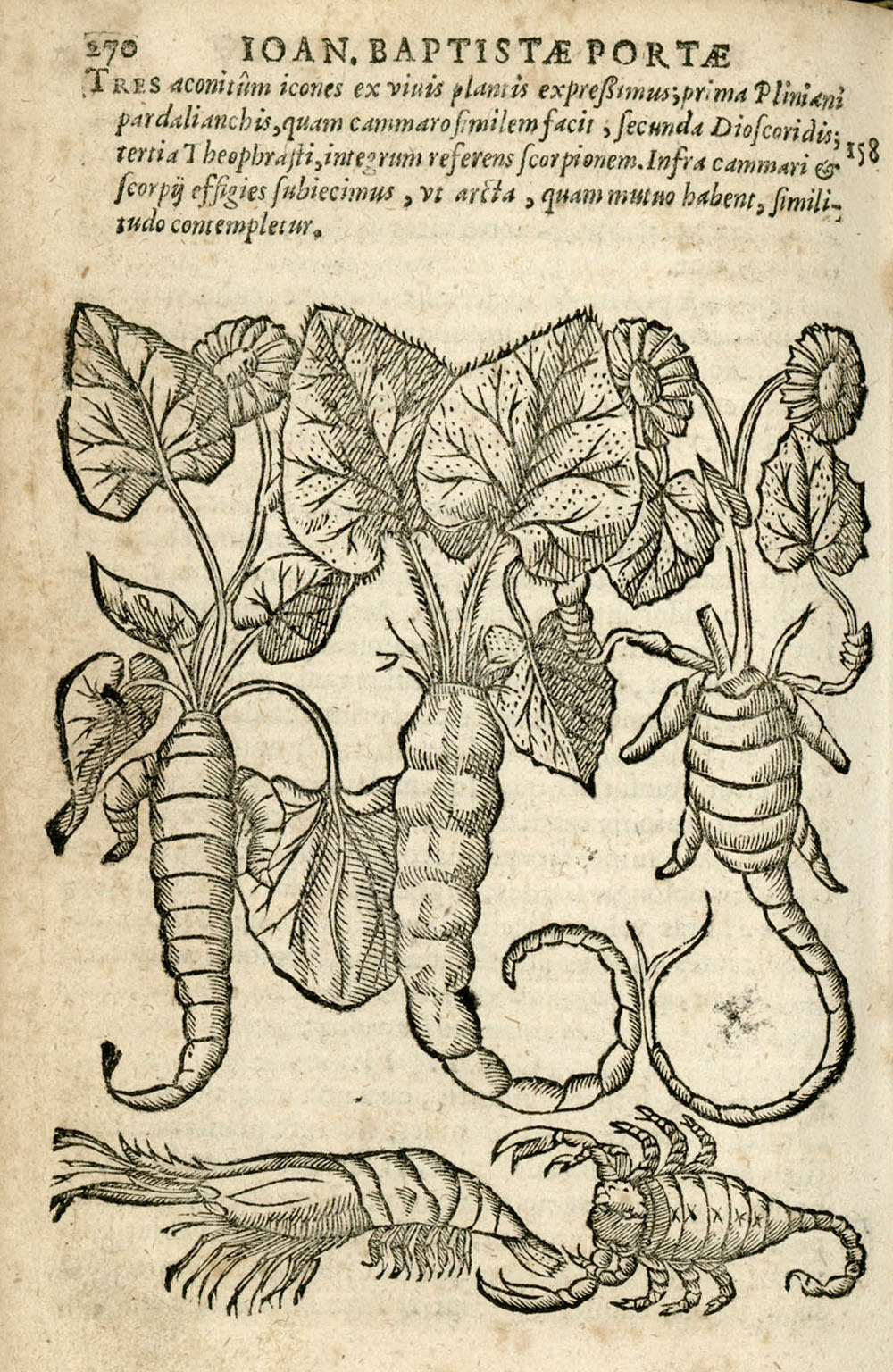
In 1560, the Neapolitan scientist and playwright Giambattista della Porta (1535-1615) helped found one of Europe’s earliest scientific societies, the Accademia Secretorum Naturae (Academy of the Mysteries of Nature). Members of the group, who termed themselves otiosi (men of leisure), were admitted after they had presented a new “fact†related to natural science. Most outsiders looked upon the academy with suspicion. The Catholic Inquisition in particular regarded it as an occultist organization and eventually forced it to disband. Between 1592 and 1598, the Church also prohibited the publication of della Porta’s works.
It is not hard to see why della Porta came to the inquisitors’ attention. One of his most peculiar ideas, which he outlined in the book displayed here, was the Doctrine of Signatures. In an earlier treatise, della Porta had suggested that the bodily form of man contains indications of his character and spiritual qualities. Here, he goes one step further and suggests that the inner qualities and healing powers of plants are also revealed by external signs.
As Agnes Robertson Arber writes in her book Herbals: Their Origin and Evolution, della Porta “supposed that long-lived plants would lengthen a man’s life, while short-lived plants would abbreviate it. He held that herbs with a yellow sap would cure jaundice. Plants with flowers shaped like butterflies would cure the bites of insects, while those whose roots or fruits had a jointed appearance, and thus remotely suggested a scorpion, must necessarily be sovereign remedies for the sting of that creature.â€
Della Porta, a student of astrology, also suggested that some plants take on the qualities of the astrological sign under which they are harvested. If you want to keep people from arguing with you, for example, he recommends carrying marigolds gathered when the sun was in the sign of Leo.
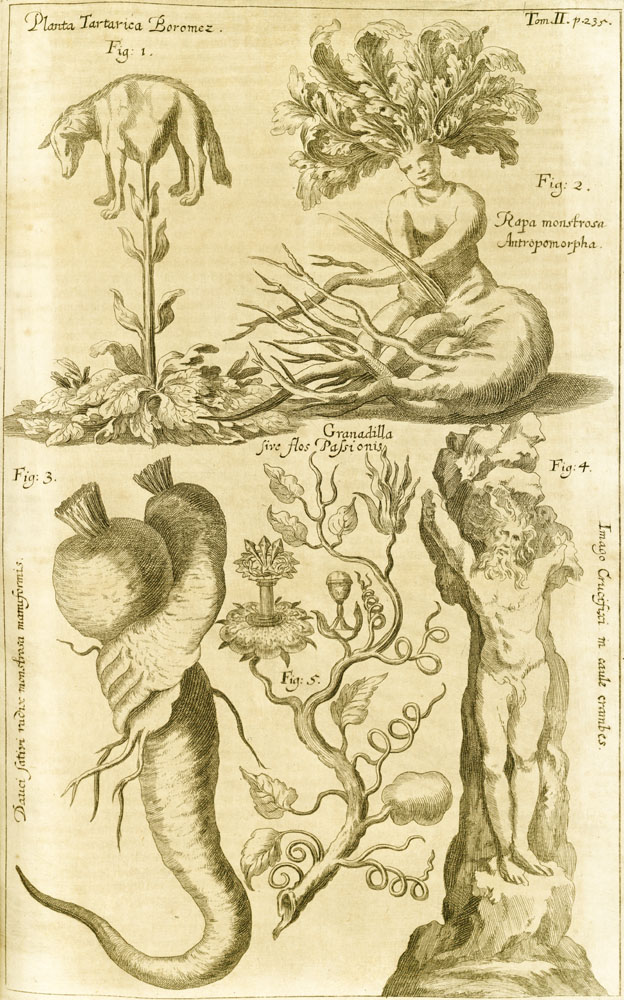
McIlhenny Q155 .Z3 Flat
If plants’ physical characteristics could reveal their healing powers, some also believed that the Almighty sometimes tries to communicate with mankind via botanical mediums. An example can be found in the engraving seen here, from a work by the German cleric and student of the occult Johann Zahn.
One of the most interesting plants discovered in the New World in the sixteenth century was the passion flower. Descriptions of it caught the attention of religious thinkers in Europe because of its curiously shaped petals and reproductive organs, which were thought to bear a resemblance to Christ’s wounds and crown of thorns. Surely, church fathers thought, this was a sign from God that the Americas were meant to be conquered for Christ.
Most of Zahn’s examples would be at home in a modern tabloid. In Spain, for instance, a vision of the crucifixion had supposedly appeared “perfectissime efformatus†(“perfectly depictedâ€) on a cabbage.
